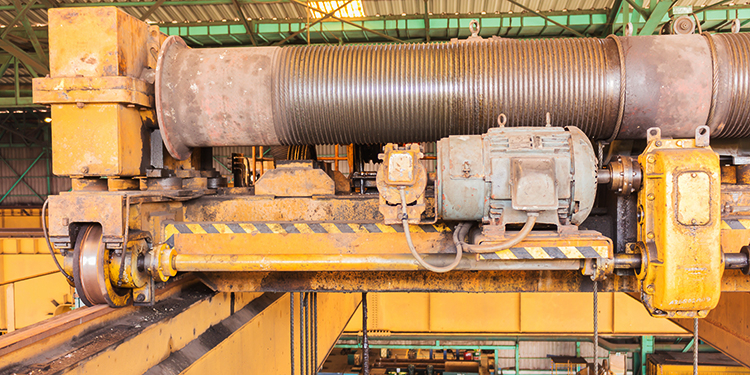MHI: Keep workers safe from overhead lifting moving parts
2 August 2022The CMAA (Crane Manufacturers Association of America), MMA (Monorail Manufacturers Association) and HMI (Hoist Manufacturers Institute) part of MHI, the US (Material Handling, Logistics and Supply Chain Association) has published a blog regarding moving parts in overhead lifting systems with coupling and line shaft guards.
It claims couplings that connect different parts of components and machinery and power-driven, rotating line shafts for power transmission can be hazardous to personnel working on or in proximity to overhead handling equipment if they make contact with these moving parts. That’s why these mechanical components should be shielded with guards that serve as barriers to prevent access to these dangerous areas during normal operation of the lifting equipment.
In overhead cranes, hoists, and monorails four guarding types are often used. These are; Fixed guards which are permanently attached to the equipment and cannot be moved; Removable guards can be disconnected and removed to help with maintenance or inspection tasks; Interlocked guards are connected to the power source of the equipment, shutting it off automatically if they are opened or moved and Self-adjusting guards move in relation to the item being guarded and the operator of the equipment.
Both the Occupational Safety and Health Administration (OSHA) and the American Society of Mechanical Engineers (ASME) have published requirements for the use of guarding devices for couplings and line shafts. They include:
OSHA 1910.179(e)(6)(i): Exposed moving parts such as gears, set screws, projecting keys, chains, chain sprockets, and reciprocating components which might constitute a hazard under normal operating conditions shall be guarded.
OSHA 1910.179(e)(6)(ii): Guards shall be securely fastened.
OSHA 1910.179(e)(6)(iii): Each guard shall be capable of supporting without permanent distortion the weight of a 200-pound person unless the guard is located where it is impossible for a person to step on it.
ASME B30.2-2016 and ASME B30.17-2017: Both crane standards contain requirements for guarding similar to the OSHA 1910.179 regulation, but add requirements for maintenance personnel to ensure all guards have been replaced if they are lost or damaged before returning the crane or hoist to service.
In addition to the OSHA and ASME standards, there are several best practices for the installation and use of guards for couplings and line shafts on overhead lifting equipment. They include:
CMAA, MMA and HMI has put together a free guide for members; The Overhead Lifting Best Practices Guide. The document was developed by the group’s Service and Safety Committee in collaboration with OSHA through the Crane, Hoist and Monorail (CHM) Alliance.
Through this partnership, the organizations provide information, guidance and access to training resources that help protect the health and safety of worker using hoists, cranes, and monorails.
